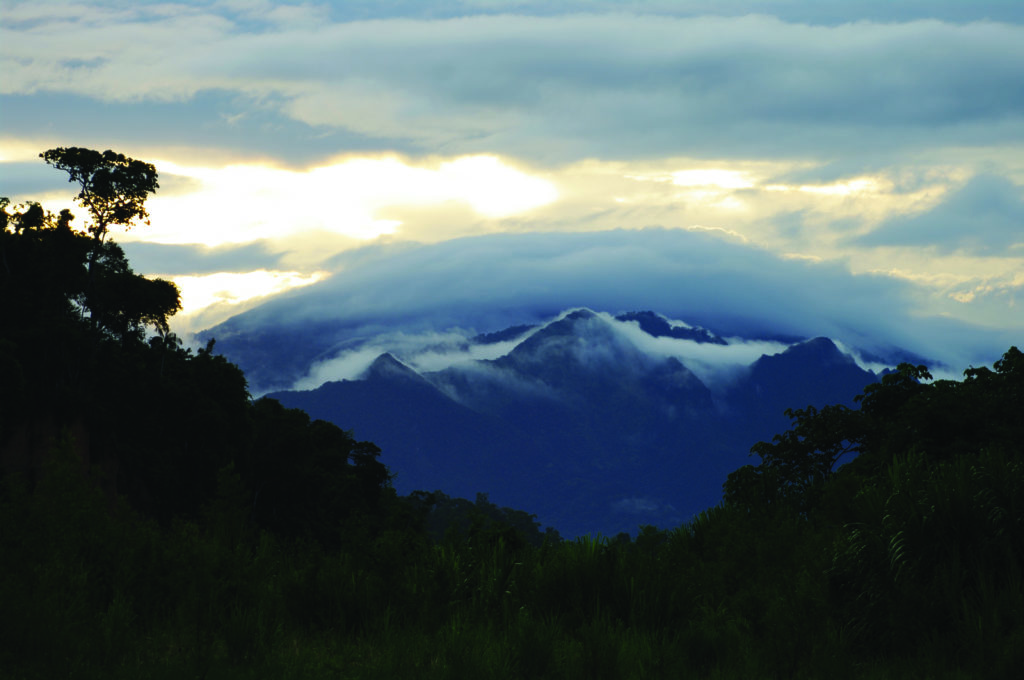Deadly Paradise: Madidi National Park
by Scott Dutfield · 12/09/2020
What makes Madidi National Park one of the most diverse yet dangerous places in the world?

In 1981, young Israeli backpacker Yossi Ghinsberg set off into an uncharted area of the Bolivian Amazon with two acquaintances and a complete stranger. The new addition to the group, a mysterious man named Karl Ruprechter, claimed to be a geologist and gold miner and enthralled them with stories of an indigenous tribe and undiscovered gold. Unable to resist the temptation of adventure and riches, they ignored the warnings of local people and followed him by plane and boat into the jungle.
After two weeks of walking, the group had achieved nothing besides getting lost, eating all their food supplies and arguing. They decided to split up, with Ghinsberg and American photographer Kevin Gale building a raft and continuing, while Swiss teacher Marcus Stamm – who had developed trench foot and had grown weak after refusing to eat the monkeys the other men shot – attempted to return to civilisation with Ruprechter. When strong currents smashed their raft against a rock, Ghinsberg was separated from Gale and spent the next three weeks alone fighting for survival.
Ghinsberg could hardly have been lost in a worse place. He was travelling through an area of the Amazon that now belongs to Madidi National Park. Established in 1995, the park covers 18,958 square kilometres and is believed to be the most biologically diverse place in the world. With its neighbouring reserves and parks, it’s part of one of the world’s largest protected areas. However, with diversity comes danger; during his three-week ordeal Ghinsberg encountered countless threats, from fire ants to a prowling jaguar.
Madidi National Park is teeming with life, from the adorable to the lethal. It’s home to around 270 types of mammal, almost 500 different fish, over 200 species of amphibian and about the same number of reptiles. Insects are harder to count, but it’s currently estimated that some 120,000 species flit and crawl their way through the forest. Perhaps most staggeringly, around 1,200 species of bird – over a tenth of all worldwide bird species – can be found in Madidi. Botanists and zoologists flock to the park in the hopes of spotting just a few of these species, and expeditions have uncovered new species found nowhere else, like the Madidi titi monkey.
Not all of Madidi is covered by a canopy; the huge area designated as a national park reaches from the icy slopes of the Andes to the lush rainforest, with climates ranging from cold and temperate to tropical. A visit to Madidi is a step back in time and a chance of real adventure – there’s no internet connection or phone signal, and the lodges in the heart of the forest are many kilometres from the nearest town. Even getting to the park is a challenge, requiring a 40-minute flight or a winding 20-hour bus journey from La Paz to Rurrenabaque, a small town at the edge of the Amazon known as the gateway to Madidi. These journeys can become even more complicated in the rainy season, when torrential downpours ground flights and wash away the mountain roads. If they make it to Rurrenabaque visitors can explore Madidi on foot or by boat, led by guides able to spot signs of trouble that would go unnoticed by outsiders.
Madidi, renowned for being as dangerous as it is stunning, is now itself under threat. The building of a ‘megadam’ across the Bala Gorge was first proposed in 1998 – the western edge of the gorge is within the boundaries of Madidi and the dam would flood around 2,000 square kilometres of the park, displacing both wildlife and local people. The initial plans were abandoned, but the project was revived in 2007. President Evo Morales hopes to construct the megadam in the next ten to 15 years and turn Bolivia into South America’s leading producer of hydropower, but the idea has been met with fierce resistance from indigenous and environmental groups. The forest holds huge importance for many people – both those who call it home and those who have immersed themselves in its wilderness for a few weeks.
Yossi Ghinsberg was lucky; despite falling in swamps, losing all the skin on his feet, starving and beginning to hallucinate, he was rescued from the Amazon after Kevin Gale drifted down the river to a village and asked the local people to help him form a search party. The fate of the other two remains a mystery, as they were never seen again. Ghinsberg has told his story many times, and still people are drawn to the forest. Madidi National Park is a place of breathtaking beauty, but danger waits around every turn for the reckless traveller.
This article was originally published in How It Works issue 122, written by Victoria Williams
For more science and technology articles, pick up the latest copy of How It Works from all good retailers or from our website now. If you have a tablet or smartphone, you can also download the digital version onto your iOS or Android device. To make sure you never miss an issue of How It Works magazine, subscribe today!




